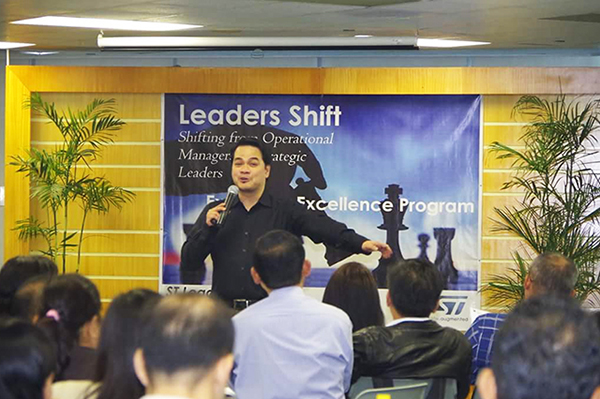Being in the learning and development business, I have observed that some multinational corporations are shifting traditional methods of learning in search of more effective solutions—often using technological innovations that engage their people better and help improve performance.
Several multinationals are utilizing social media so swiftly that they even customize internal social platforms to better engage employees and foster a learning culture. But even though social media has become mainstream, many companies still lack the understanding on how to use these tools for learning and development. For example, certain companies don’t know which social tools to use appropriately. Commonly used tools are document sharing, discussion forms, and blogs, but they aren’t generally using video or micro-blogs—which mainstream online media claims to be more effective in sharing knowledge and information—to improve their learning functions. Companies must educate themselves first on the value of social learning before starting any social learning programs.
Obviously, mobile technology has transformed the way companies work, interact, and collaborate on a global scale. But I have yet to see companies explore and make mobile a part of the equation of their learning solutions. Several companies in the west are already using mobile web-based learning solutions, mobile learning apps, and performance measurement web-based sites. Before the deployment of these tech tools, companies must first execute a mobile strategy. Alignment is key. Additionally, it is also equally challenging to determine what options are available and which providers or enablers to consider. Regardless of these barriers, mobile technology is here to supplement or directly impact the learning culture.
As the president and co-founder of Breakthrough Leadership Management Consultancy, I’ve observed that from our own list of clients alone, more than half are still leveraging on classroom trainings, workshops or learning events; one-third are increasing their budget for learning and development in the next 12 months, paving the way for innovations. Significantly about 12% is beginning to use technology-based learning solutions. While it may seem that many are still stuck in the more traditional approach, some are actually evolving towards these innovations. Some companies are increasing their budget for learning and development the following year, becoming more strategic in developing their learning programs and selecting technology platforms.
So, if your company is making the decision to improve its learning management program and correspondingly invest in learning management solutions, allow me to share three important actions that you and your company should do first:
First, align business objectives with people strategy. Finding and keeping talent is no longer an HR challenge but a strategic business priority. In the past, learning professionals operated in silos and had little interaction or input from other areas of the business. Today, they must be closely aligned to the overall corporate strategies in order for companies to achieve results. Any program or technology investment should involve input from business leaders to ensure that learning is driving retention, engagement, and performance. According to Investors in People (UK), those companies that did align learning and business priorities, more than 70 percent were able to improve company revenue. When a company starts deploying so many learning channels, whether web-based or mobile, it is important to be grounded on the “why.” Otherwise, employees would see these tools as additional task or burden for their productivity.
Make sure results and effectiveness are measured. How can you know if the learning strategy in place is driving business outcomes? Companies must find a way to consistently measure its effectiveness. Determine metrics in advance and include both business metrics (level of productivity, i.e. how many cases deployed per person) and learning/HR metrics (such as attendance versus non-attendance), beyond very concrete business metrics such as retention, turnover, and revenue per full-time employee, considering employee engagement, encouragement and employee satisfaction. What’s amazing is that technology-based platforms (i.e. online surveys) can enable companies to measure engagement and satisfaction.
Lastly, consider Individualized or Personalized Learning. I first saw this approach in my daughter’s “School of Tomorrow.” One approach gaining popularity in educational institutions now is teachers creating more personalized learning environments through individualized instructions to the students’ unique needs. In the workforce, the methodology is conducted similarly. Employees can be observed and assessed individually to determine what learning approach will best suit their needs, thus breaking traditional models and allowing employees to learn at their own pace. Technology or digital innovations can actually help realize this methodology. It creates an adaptive learning system, which can be effective at improving efficiency, as well as employee engagement and retention since it allows employees to build confidence and overall expertise at their own pace. Personally, I think it would particularly be beneficial to the millennial generation who may desire autonomy and mastery quickly.

Today’s companies must evolve their learning and development strategies to be able to adapt to the current workforce. The impact of traditional models of learning will eventually plateau when it comes to improving engagement and performance. By aligning learning and people strategies with business objectives and strategies as well as leveraging innovative technology, organizations will be able to create high performing teams that deliver results.

Boris Joaquin is the Editor-in-Chief of Workwise Asia. He is also a corporate trainer, executive coach and consultant, and is president and co-founder of Breakthrough Leadership Management Consultancy. He is one of the few registered Investors in People Specialist in the country. He is married to FamilyWise Asia Editor-in-Chief Michelle Joaquin and they have two daughters, Ysobel and Julia.





